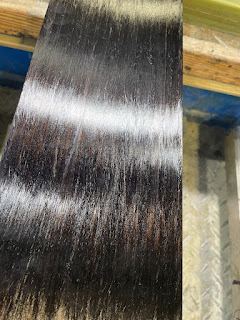Today's KNOWLEDGE Share
Innovative fibre technology could revolutionize building construction
With the Texoversum, Reutlingen University has put into operation a training and innovation center for the textile industry that is unique in Europe. The almost 2,000 square meter textile-like façade of the new building also causes a sensation architecturally: It charmingly combines the innovative power of this industry with the 160-year tradition of Reutlingen as a textile location. The highlight: The components were wound from fibres that are fixed with a special plastic resin.
The façade of the Texoversum is just one example of a brand new technology that could completely revolutionize the construction industry. The sophisticated structure was designed on the computer and is based on carbon fibres wound by robots. Similar to networks in nature, for example in spider webs, beetle wings or palm leaves, the fibre structures are also very lightweight, but at the same time highly resilient, and require very little material. This not only saves resources, but also facilitates transport and assembly of the components.
The necessary strength and durability of the composite is provided by Covestro’s aliphatic polyurethane resin system Desmocomp®, in which the fibres are embedded as if in a matrix. “The resin is highly resistant to weathering and the sun’s high-energy UV radiation, making it very suitable for outdoor applications,” explains Pejman Norastehfar, architect and specialist for construction applications in Covestro’s Coatings and Adhesives segment. “Other plus points in the construction sector are its excellent chemical and flame resistance.”
Source: JEC Group/ #managingcomposites #thenativelab
Follow: http://polymerguru.blogspot.com













